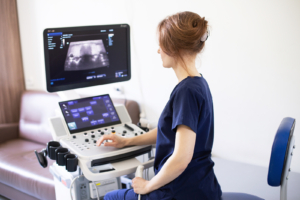Who Was The First Person To Use A Medical Ultrasound Scan?

The dawn of the modern medical imaging world, where doctors can examine and diagnose illnesses without necessarily requiring biopsies or physical examination, started at the end of the 19th century.
After Wilhelm Röntgen captured an image of his wife’s hand in 1895, it unlocked an entire field of medical diagnosis, which would later include CAT scans and ultrasound.
Whilst the history of the X-ray and computer tomography are well-documented and well-known, ultrasound in a medical context had a far more complex history, in part because it took so many steps to even realise it could be used in a medical context.
Ultrasound has existed for as long as bats have, but the echolocation ability of these flying mammals was only discovered in 1794 by scientist Lazzaro Spallanzani, and it took another century for the Galton whistle, one of the first ultrasound devices ever made, to be invented.
However, people wanted to know if it would be possible to make a device that took advantage of ultrasound and echolocation to inspect objects without opening them where an X-ray would be unusable.
This led in the late 1930s to several scientists in a wide range of fields attempting to piece together this functionality.
Floyd Firestone would create a testing device known as the Supersonic Reflectoscope in 1940, but it would not be used for medical purposes.
Meanwhile, Karl Theo Dussik and his brother Friedrich completed the first partial scan of a human body part in 1941, creating a faint outline of the brain.
The first successful ultrasound used for clinical purposes rather than research purposes was by John Wild in 1949 to check the intestines and bowels of patients who had been the victims of bomb strikes.
This work was refined and first published in The Lancet medical journal in March of 1951, and it very quickly was found to have particular promise for identifying tumours.
This early pioneering work has steered the imaging world ever since, as ever more advanced technology is used to help save lives.